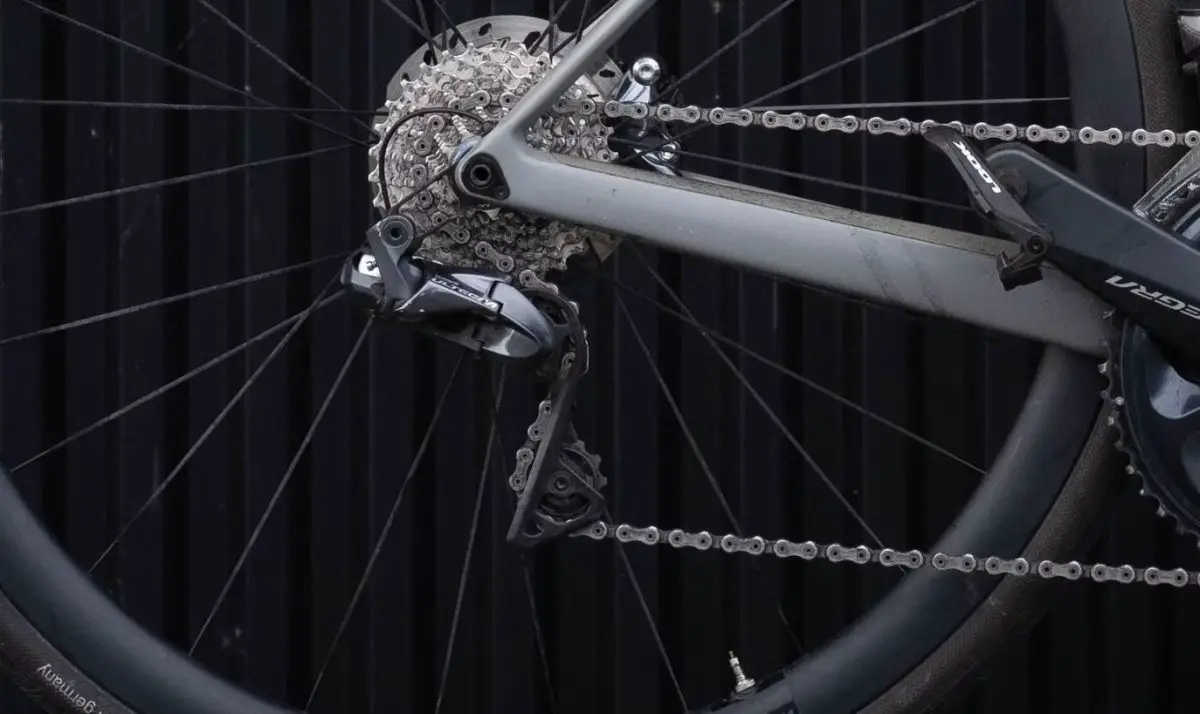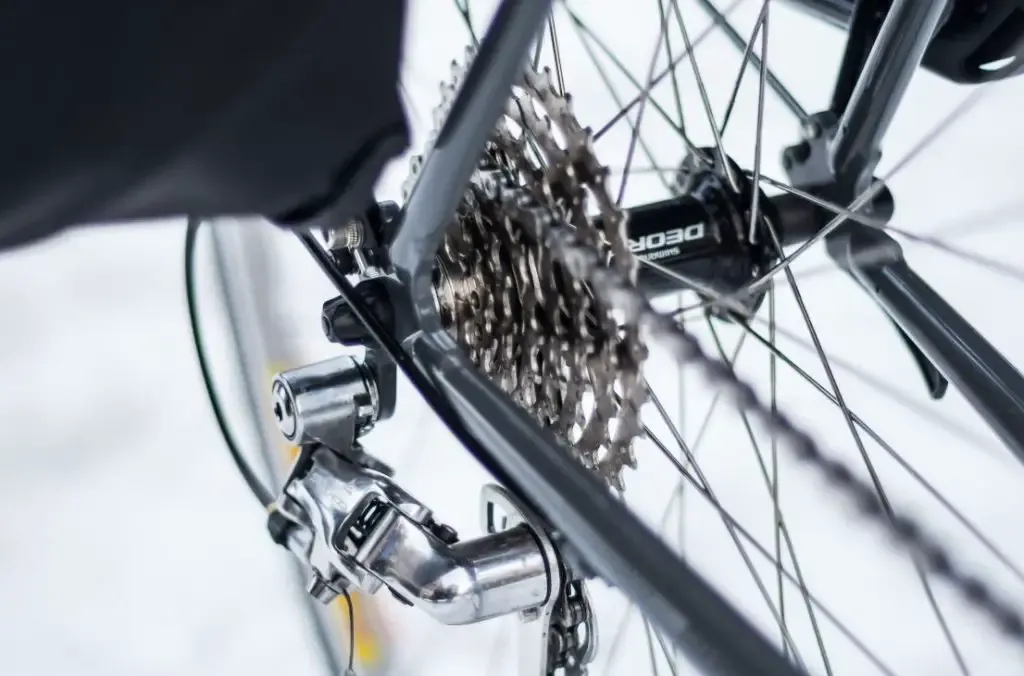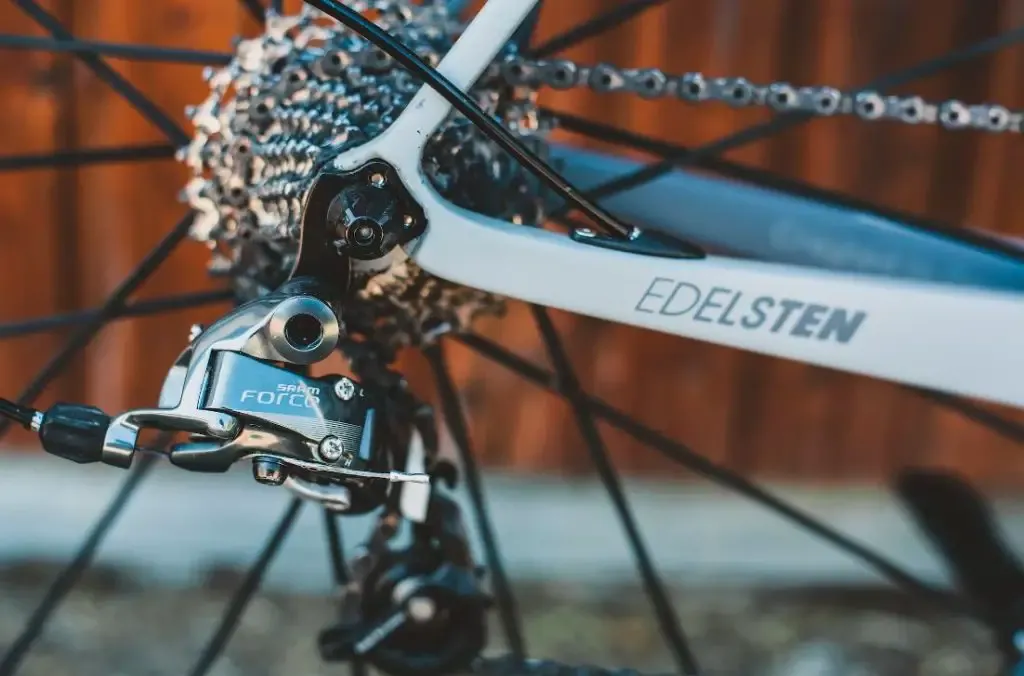· Daniel · Repairs · 4 min read
Rear Derailleur Barrel Adjuster Stuck (Quick Fixes)
A smoothly shifting rear derailleur is super important, but sometimes those barrel adjusters can get stuck in place. If your rear shifts just don't seem crisp anymore or the derailleur is stuck in one gear, the likely culprit is a seized barrel adjuster.

A smoothly shifting rear derailleur is super important, but sometimes those barrel adjusters can get stuck in place.
If your rear shifts just don’t seem crisp anymore or the derailleur is stuck in one gear, the likely culprit is a seized barrel adjuster.
Unfortunately, rear derailleur barrel adjusters are prone to getting stuck due to their position and materials.
Thankfully, freeing up a stuck rear derailleur barrel adjuster is usually easy.
In this post, I’ll walk through the common causes of a derailleur barrel adjuster stuck and the steps to get it moving freely again.
Also read Bike Chain Wont Go Backwards
Why Is My Barrel Adjuster Stuck?
Rear derailleur barrel adjusters get stuck due to a combination of environmental factors and lack of proper maintenance.

Here are some of them:
Dirt and debris - Road grit, mud, etc can work its way into the adjuster threads over time. This buildup leads to corrosion and sticking.
Corrosion - Galvanic corrosion occurs between the steel adjuster and aluminum derailleur body, “welding” them together.
Road salt, moisture, and dirt accelerate this process.
No lubrication - Without fresh grease regularly applied, the threads dry out and corrode easier. Unlubricated threads tend to bind up over time.
Over-tightening - Over tightening the adjuster can deform the threads, making turning difficult. Aluminum threads are prone to stripping if over-torqued.
Cable tension - Derailleur cables put tension on the system. This constant tension can cause seizing of parts over time if not adjusted properly.
Crashes or impacts can also bend or damage the adjuster, and prevent smooth operation.
Also read Can You Return A Bike After Riding It
How Do You Fix A Stuck Barrel Adjuster?
Here are some tips for getting your stuck derailleur barrel adjuster unstuck and working properly again:
Disconnect The Gear
Make sure to fully disconnect the gear cable before trying to loosen a stuck adjuster.
The cable tension itself can sometimes cause seizing or sticking of the mechanism. Removing the cable relieves that tension.
Shift into the smallest cog, disconnect the cable anchor bolt, and pull the cable out of the adjuster.
Try Penetrating Oils
If your barrel adjuster seems seized up and won’t budge, try using penetrating oils like WD-40 or Kroil. Apply a generous amount onto the exposed threads of the adjuster.
Let it soak in. Don’t just spray the oil on and immediately try to loosen.
You need to give it time to fully penetrate and work on freeing things up.
Let it sit for at least 10-15 minutes before attempting to turn the adjuster again. The longer you can wait, the better.
The oil will seep into the crevices and help break down any grime or corrosion.
Apply Some Heat
If the penetrating oil soak doesn’t seem to help, some judicious heat application can assist.
Use a hair dryer or heat gun on a low setting and gently heat the area around the barrel adjuster. This can cause the metals to expand slightly and help break the bond of any corrosion seizure.
Just don’t overdo it, as too much heat can damage components.
Clean Out Corroded Threads
Take the opportunity once loosened to carefully clean out any grime, grease, or corrosion from the adjuster threads and the female threads inside the derailleur body where the adjuster sits.
For stubborn buildup, use a thread chaser tool to re-cut and clean out the threads.
Just be gentle, as the aluminum derailleur body threads can strip out easily if you’re too aggressive.
Properly preparing the surfaces will allow everything to turn smoothly.
Use Pliers if Needed
If you’ve tried the above steps and the adjuster still won’t budge, a pair of pliers may be needed. Grip gently on the flats of the adjuster knob and try to turn.
Just be careful not to apply too much force, as seized adjusters can snap off entirely if over-torqued.
Avoid clamping down tightly with the pliers if possible.
Get a secure grip, but ease into any turning force.

If it still refuses to move, it may need to be drilled out or further penetrated by oils. Forcing it can render it unusable.
Consider Friction Shifting
If the adjuster remains stuck after all other efforts, consider just leaving it be and using the rear derailleur in friction mode.
Rather than risk breaking off the adjuster completely, just leave it alone.
You can properly adjust limit screws to allow the derailleur to function without ever turning the barrel adjuster.
The low limit screw stops it from going too far outboard, while the high limit screw prevents it from going too far inboard.
And as long as it is adjusted properly, the bike will be rideable.
Frequently Asked Questions
| Question | Answer |
|---|---|
| Which Way Do I Turn My Inline Barrel Adjuster? | Turn the inline barrel adjuster clockwise to tighten the cable for smoother shifts to larger gears (upshifting), and turn it counterclockwise to loosen the cable for smoother shifts to smaller gears (downshifting). |
| How Does A Rear Derailleur Barrel Adjuster Work? | The rear derailleur barrel adjuster is a small cylindrical piece located where the shift cable housing connects to the derailleur. Turning the barrel adjuster screws it in or out of the derailleur body changes the cable tension and derailleur position. |



